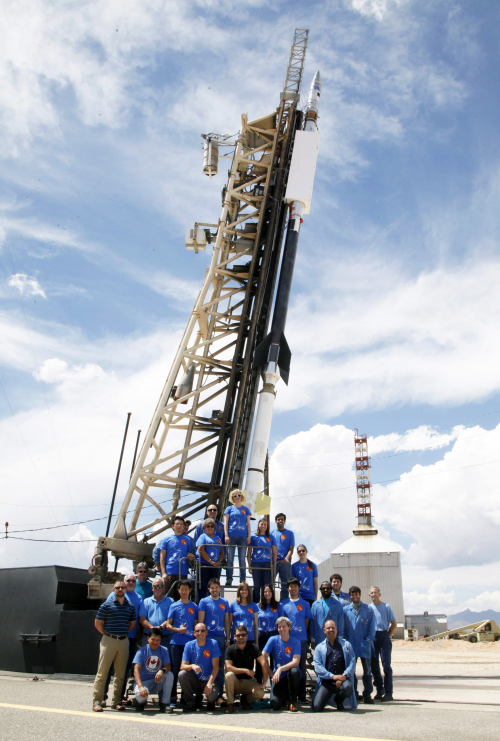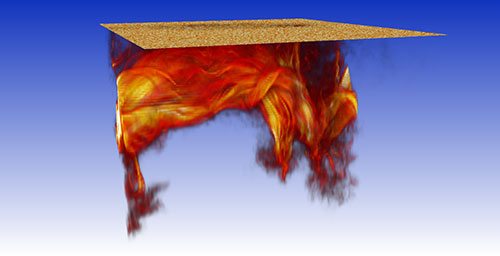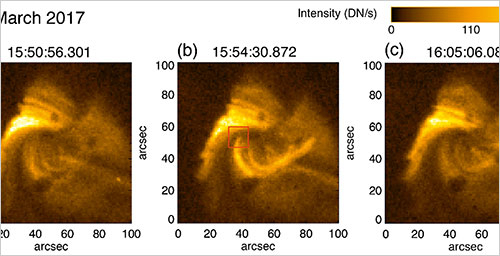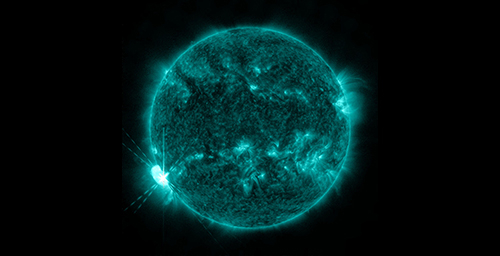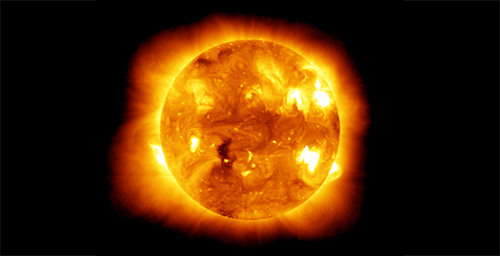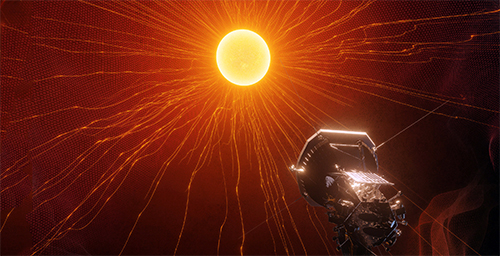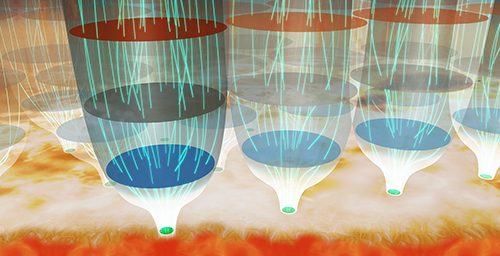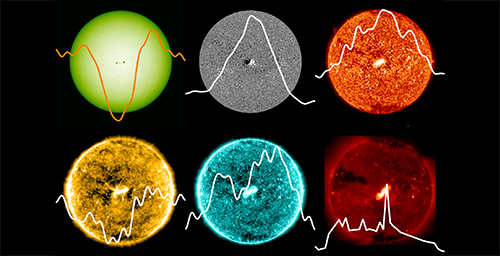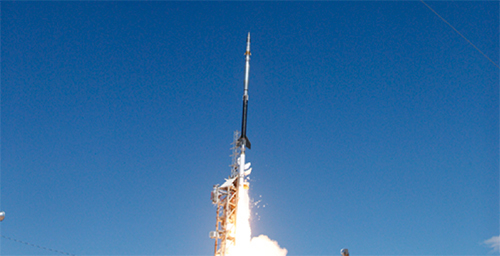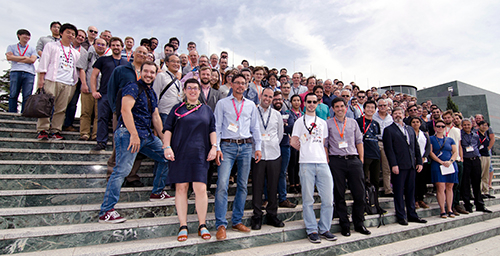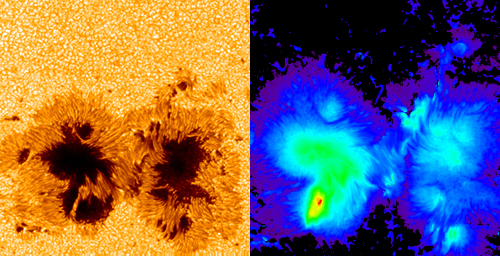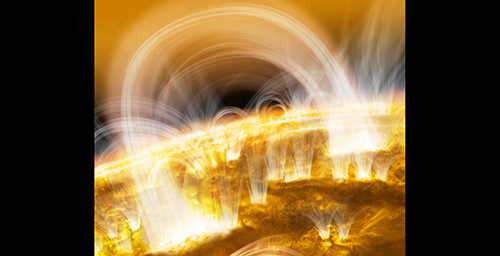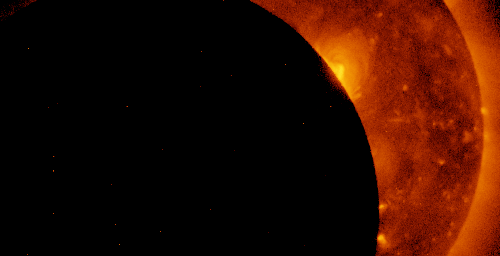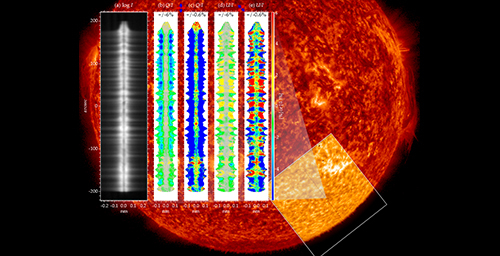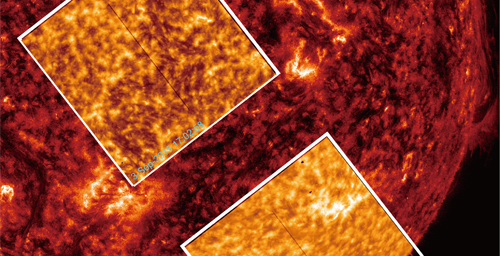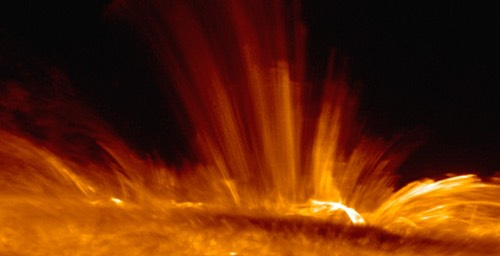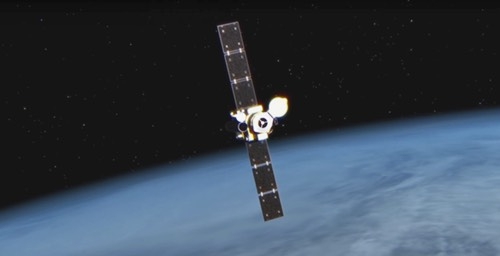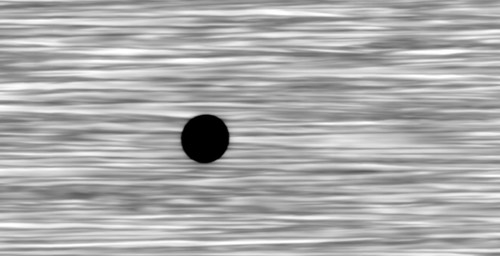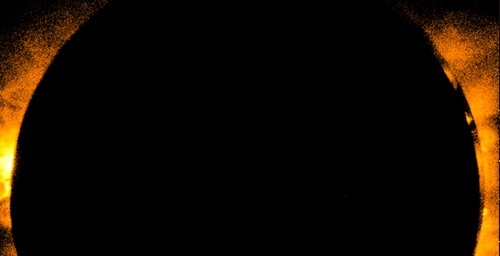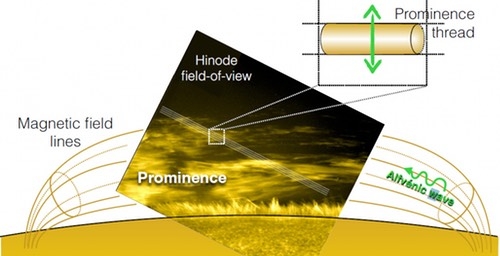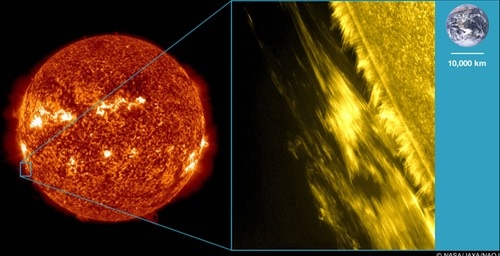National Astronomical Observatory of Japan, National Institutes of Natural Science
Kavli IPMU/The University of Tokyo
Nagoya University
Institute of Space and Astronautical Science / Japan Aerospace Exploration Agency (ISAS/JAXA)
Tokyo University of Science
Group photo of FOXSI-3 team before the launch. Taken photo in front of the sounding rocket with FOXSI-3 installed. (C) NASA, FOXSI-3 team
FOXSI-3 Was Successfully Launched and Conducted World First Observations
At 11:21 a.m. on September 7, 2018 (in Mountain Daylight Time, 2:21 a.m. on September 8, 2018 in Japan Standard Time), the solar observing rocket FOXSI-3 (Focusing Optics X-ray Solar Imager) was launched from the launch site located at White Sands, New Mexico, USA. FOXSI-3 flew in a ballistic trajectory for about 15 minutes reaching a maximum altitude of about 300 km. It observed three different solar corona regions with different X-ray brightnesses, such as "active regions", "quiet regions", and the "solar north pole" for 6 minutes. All observation instruments installed on FOXSI-3 worked properly. They succeeded in focusing imaging spectroscopic observation (*1) of the solar corona in soft X-rays for the first time in the world. Researchers have just started to analyze the observational data, but they have found that more than 1,000,000 soft X-ray photons have been detected. Please expect significant science results.
Please visit Hinode Science Project website for more details.
(*1) Focusing imaging spectroscopic observation
FOXSI-3 collects X-rays with mirrors that steer them to detectors. The detectors conduct simultaneous imaging and spectroscopy. Spectroscopy means sorting the electromagnetic waves (here, X-ray) by energy. Imaging spectroscopic observation, which conducts imaging to get spatial information and spectroscopy to get information about energy simultaneously, is an effective means to obtain physical information about phenomena. FOXSI-3 has a great advantage in that it conducts imaging spectroscopy so fast that it can also trace the time changes of phenomena.

